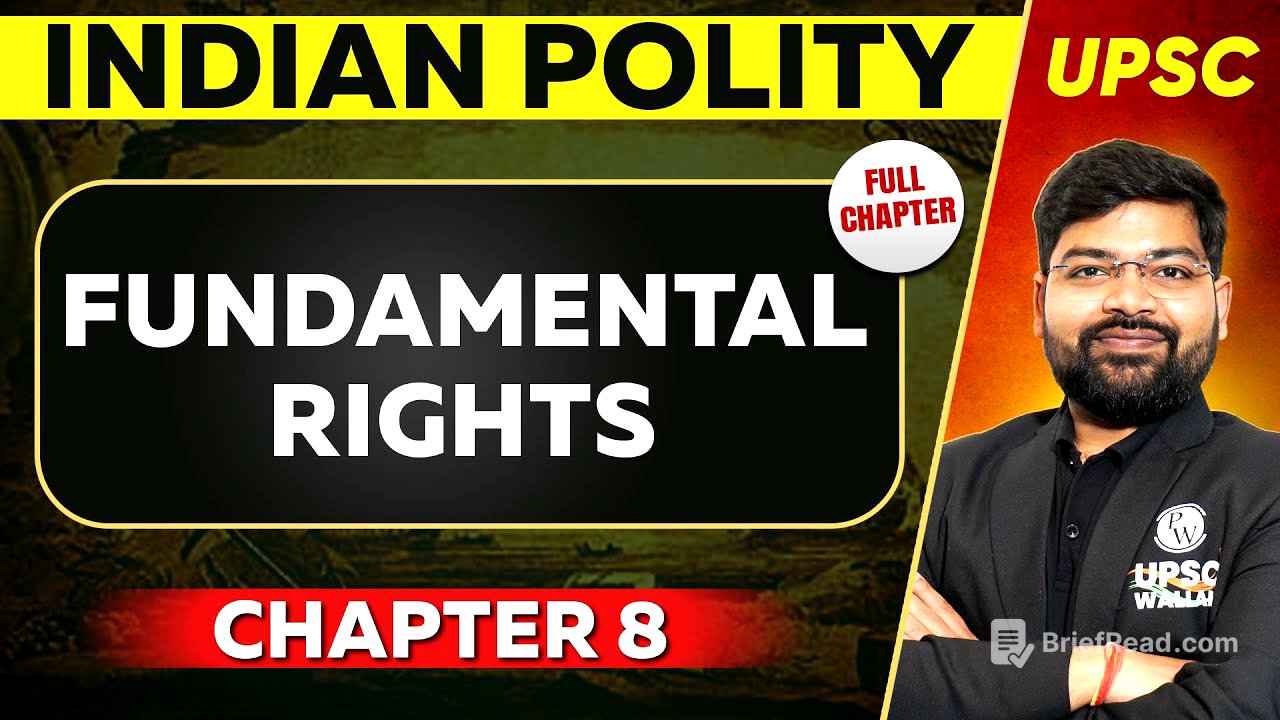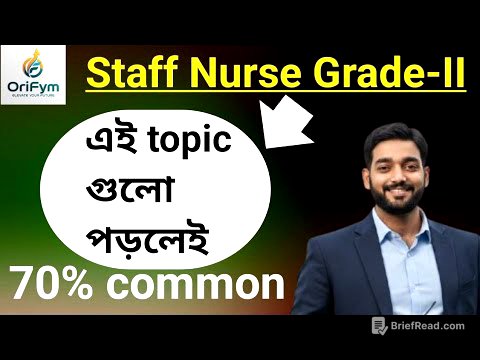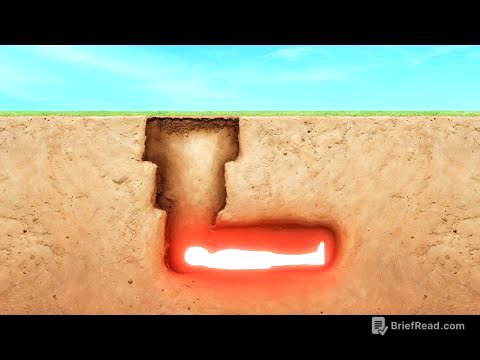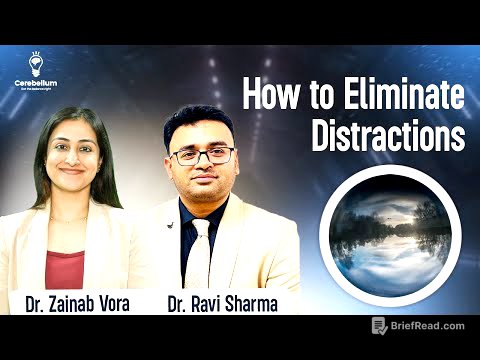TLDR;
This video explains Fundamental Rights in the Indian Constitution. It covers the evolution of rights, features of Fundamental Rights, and specific articles related to various rights. The video also discusses the significance of Fundamental Rights and their criticism.
- Fundamental Rights are essential for the development of individuals and the nation.
- They are enshrined in Part III of the Indian Constitution, often referred to as the Magna Carta of India.
- Fundamental Rights are not absolute but qualified, meaning they can be restricted under certain circumstances.
- The video also discusses the concept of judicial review and how it applies to Fundamental Rights.
Introduction [0:00]
This chapter introduces the concept of Fundamental Rights and their importance in the Indian Constitution. It uses an analogy of a family to explain how Fundamental Rights protect individuals from the arbitrary actions of the state and other individuals. The chapter emphasizes the need to understand Fundamental Rights as they are crucial for the development of individuals and the nation.
What are Fundamental Rights [4:41]
This chapter defines Fundamental Rights as civil liberties guaranteed by the Indian Constitution. It explains that these rights are available to both Indian citizens and foreigners residing in India, with Indian citizens enjoying more rights due to their residency. The chapter highlights that Fundamental Rights are essential for the overall development of individuals and the nation.
Evolution of Rights [9:17]
This chapter traces the evolution of rights from the Magna Carta of 1215 to the modern era. It discusses the significance of the Magna Carta, the Bill of Rights of 1689, and the French Revolution in shaping the concept of individual rights. The chapter also highlights the role of the Motilal Nehru Committee in advocating for a Bill of Rights in India before independence.
Fundamental Rights [14:45]
This chapter provides an overview of the Fundamental Rights enshrined in the Indian Constitution. It explains that these rights are categorized into various categories, including the Right to Equality, Right to Freedom, Right Against Exploitation, Right to Freedom of Religion, Cultural and Educational Rights, and Right to Constitutional Remedies. The chapter emphasizes the importance of each category and its role in protecting individual rights.
Features of Fundamental Rights [18:25]
This chapter delves into the features of Fundamental Rights, explaining that they are available to both individuals and groups. It also clarifies that Fundamental Rights are not absolute but qualified, meaning they can be restricted under certain circumstances. The chapter further explains that some Fundamental Rights are directly enforceable, while others require legislation for their enforcement.
Article 12 [29:00]
This chapter focuses on Article 12 of the Indian Constitution, which defines the term "State." It explains that the term "State" encompasses various entities, including Parliament, State Legislatures, local governments, and any other body acting as an agency of the State. The chapter provides examples to illustrate the scope of Article 12 and its application in various contexts.
All of them represent the State & do not represent [31:00]
This chapter continues the discussion on Article 12, clarifying that while various entities represent the State, the Judiciary does not fall under the definition of "State" when performing its judicial functions. It explains that the Judiciary acts as a check on the State and does not become part of it. The chapter also discusses the case of the Board of Control for Cricket in India (BCCI) and its status as a private entity.
Article 13 [35:36]
This chapter explains Article 13 of the Indian Constitution, which deals with the concept of judicial review. It states that any law inconsistent with Fundamental Rights will be declared void. The chapter emphasizes the role of the Judiciary in ensuring that laws do not violate Fundamental Rights.
Article 13 Vs Article 368 [40:06]
This chapter explores the relationship between Article 13 and Article 368, which deals with constitutional amendments. It discusses the landmark case of Golaknath v. State of Punjab and the subsequent amendments to the Constitution. The chapter highlights the debate surrounding the power of Parliament to amend Fundamental Rights and the role of judicial review in this process.
Right to equality (Article 14-18) [45:22]
This chapter focuses on the Right to Equality, enshrined in Articles 14-18 of the Indian Constitution. It explains the concepts of "Equality before the law" and "Equal protection of the laws," highlighting their significance in ensuring equal treatment for all citizens. The chapter also discusses various exceptions to the Right to Equality, including special provisions for women and children, and the concept of reservation for backward classes.
Right to Freedom [1:39:34]
This chapter delves into the Right to Freedom, enshrined in Article 19 of the Indian Constitution. It explains the six freedoms guaranteed under Article 19, including freedom of speech and expression, freedom of assembly, freedom of movement, freedom of residence, freedom of profession, and freedom to form associations. The chapter also discusses the reasonable restrictions that can be imposed on these freedoms.
Article 20 [2:14:23]
This chapter explains Article 20 of the Indian Constitution, which provides protection against ex post facto laws and double jeopardy. It clarifies that the law cannot be applied retrospectively to punish individuals for acts that were not illegal at the time of their commission. The chapter also explains the concept of self-incrimination and its application in criminal cases.
Article 21 [2:19:32]
This chapter focuses on Article 21 of the Indian Constitution, which guarantees the Right to Life and Personal Liberty. It discusses the evolution of the interpretation of Article 21 by the Supreme Court, highlighting the inclusion of various rights within its scope, such as the right to education, right to privacy, right to a clean environment, and right to livelihood.
Article 21A [2:34:53]
This chapter explains Article 21A of the Indian Constitution, which guarantees the Right to Education for children between the ages of 6 and 14. It discusses the Right to Education Act, 2009, and its significance in ensuring access to education for all children.
Article 22 [2:37:15]
This chapter explains Article 22 of the Indian Constitution, which provides protection against arbitrary arrest and detention. It discusses the various safeguards provided under Article 22, including the right to be informed of the grounds of arrest, the right to consult with a lawyer, and the right to be released after 24 hours unless authorized by a magistrate.
Legislative power with regard to preventive detention [2:44:49]
This chapter discusses the legislative power of Parliament and State Legislatures to enact laws regarding preventive detention. It explains the concept of preventive detention and the safeguards provided under Article 22, including the requirement of an advisory board to review the detention.
Rights Against Exploitation [2:28:16]
This chapter focuses on the Right Against Exploitation, enshrined in Articles 23 and 24 of the Indian Constitution. It explains that Article 23 prohibits trafficking in human beings, forced labor, and other similar forms of forced labor. Article 24 prohibits the employment of children below the age of 14 in hazardous occupations. The chapter discusses the various laws enacted to enforce these rights, including the Bonded Labour System (Abolition) Act, 1976, and the Child Labour (Prohibition and Regulation) Act, 1986.
Article 23 [2:54:25]
This chapter explains Article 23 of the Indian Constitution, which prohibits trafficking in human beings and forced labor. It discusses the various forms of exploitation covered under Article 23, including bonded labor, domestic servitude, and child soldiery. The chapter also highlights the role of the State in protecting citizens from these forms of exploitation.
Article 24 [2:55:58]
This chapter explains Article 24 of the Indian Constitution, which prohibits the employment of children below the age of 14 in hazardous occupations. It discusses the various laws enacted to enforce this right, including the Child Labour (Prohibition and Regulation) Act, 1986. The chapter also highlights the role of the National Commission for Protection of Child Rights (NCPCR) in protecting children's rights.
Right to Freedom of Religion [3:01:45]
This chapter focuses on the Right to Freedom of Religion, enshrined in Articles 25-28 of the Indian Constitution. It explains the concept of secularism in India and the right of individuals to practice, profess, and propagate their religion. The chapter also discusses the restrictions that can be imposed on the freedom of religion in the interest of public order, morality, and health.
Cultural and Educational Rights [3:17:26]
This chapter explains the Cultural and Educational Rights, enshrined in Articles 29 and 30 of the Indian Constitution. It discusses the right of minorities to conserve their culture and language, and the right to establish and administer educational institutions of their choice. The chapter also highlights the importance of protecting the cultural identity of minorities.
Right to property [3:24:35]
This chapter explains the Right to Property, which was originally a Fundamental Right but was later removed from Part III of the Constitution and made a legal right under Article 301. It discusses the 44th Amendment Act, 1978, which led to this change. The chapter also explains the various provisions related to the acquisition of property by the State.
Writs [3:32:19]
This chapter explains the concept of writs, which are legal remedies available to individuals whose Fundamental Rights have been violated. It discusses the five types of writs: Habeas Corpus, Mandamus, Certiorari, Prohibition, and Quo Warranto. The chapter also highlights the role of the Supreme Court and High Courts in issuing these writs.
Difference between Supreme Court and High Court [3:47:05]
This chapter explains the difference between the Supreme Court and High Courts in terms of their jurisdiction and powers. It highlights that the Supreme Court has original jurisdiction over matters related to Fundamental Rights, while High Courts have the power to issue writs for the enforcement of Fundamental Rights within their respective states.
Expectations to the Fundamental Rights [3:55:01]
This chapter discusses the various exceptions to Fundamental Rights, including the concept of reasonable restrictions, special provisions for women and children, and the concept of reservation for backward classes. It also explains the concept of preventive detention and the safeguards provided under Article 22.
Criticism of Fundamental Rights [3:58:12]
This chapter discusses the criticism of Fundamental Rights, including arguments that they lead to excessive litigation, lack clarity in their definition, and are susceptible to abuse. The chapter also highlights the debate surrounding the concept of reservation and its impact on social equality.
Significance of Fundamental Rights [4:00:06]
This chapter concludes the video by discussing the significance of Fundamental Rights in the Indian Constitution. It highlights their role in establishing a democratic structure, protecting the interests of minorities and backward classes, and ensuring the rule of law. The chapter emphasizes the importance of upholding Fundamental Rights for the well-being of individuals and the nation.









